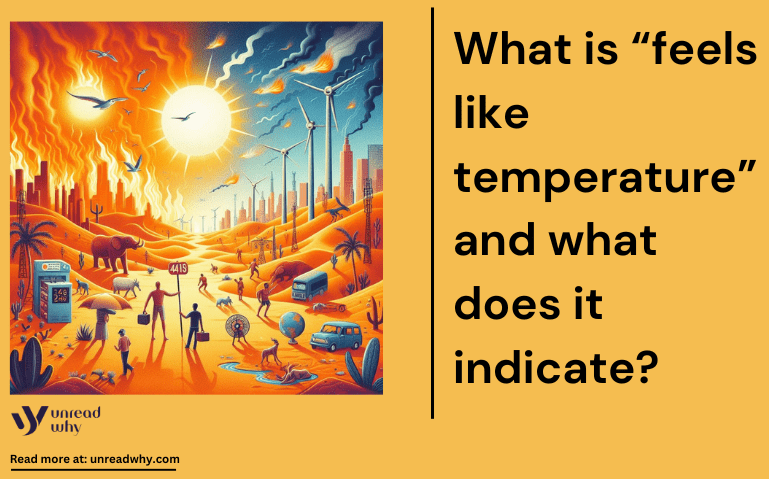With the rise in the temperature and the entire country in the shekels of heat waves, checking the weather has become a constant. Many wonder when the temperature of the place is mentioned, what the significance of the “feels like” section at its bottom, and what it denotes. Is it gimmicky or an over-exaggeration of the people and their response to a particular temperature?
What is “feels like temperature”?
Well, to clear this misconception, “feels like temperature is actually how hot or hot it would feel to humans and is based on the intensity of wind and humidity. The temperature and its effect are influenced by a hot of factors, but primarily, it is the humidity and the wind that make a big difference. “Feels like” temperature is the measure of what the actual weather is like when one is out and about in the open. “Feels like temperature” is sometimes referred to as the apparent temperature, which reflects how hot or cold it feels on the skin.

What is the difference between “feels like” temperature and actual temperature?
The actual temperature is the physical measurement of the temperature of the air, which is mainly measured using a thermometer in a shaded space, which is a measurement of the amount of thermal energy present in the air and its surroundings. The “feels like temperature” is an estimation of how cold or hot it will feel to the human skin when stepping outdoors. This is calculated by considering several factors like wind speed, humidity, and sunlight. These are the factors that influence the perception of temperature.

Factors that influence the “feels like temperature.”
Many factors are responsible for affecting the “feels like temperature,” which makes is a more elaborate and trusted indicator for the hotness or coldness of a place rather than air temperature alone. One of the critical factors is the wind speed. The stronger the speed of the wind, the colder it feels, and this is the result of the wind chill effect. However, in warmer conditions, high humidity affects the temperature of the place significantly and makes it hotter than it already is. This phenomenon is termed as the heat index where the air feels hotter and more uncomfortable because of the higher humidity of the place.
Wind Chill and Heat Index
Wind chill is the degree of coolness or hotness felt by the skin when exposed. There might be days when the temperature is 24 degrees, and the speed of the wind is 10 km/hr, and you would feel hot. Nevertheless, there might be days when the temperature is 30 degrees, and the wind speed is 35km/hr, and you might not feel as much hotness. This is because wind accelerates the heat loss from the body, which makes it feel more relaxed.
Heat Index is, however, used in warmer conditions to indicate how low humidity makes it hotter and more uncomfortable to bear. High humidity is uncool for a number of reasons like its capability to reduce a body to cool itself through sweating, which leads to much higher feels like temperatures as compared to actuarial temperature.
Impact of “feels like temperature.”
The “feels like temperature” is critical for people who work outdoors, especially athletes and workers, as it provides essential data and information about the day, which helps them plan their schedule effectively in order to escape the cold and hot stress. In addition to that, “feels like temperature” also helps in planning the outfit for the day to civilians which enables them to pick outfits they would be most comfortable wearing. “feels like temperature” also has a substantial impact on the tourism of the place as it determines the safety of many outdoor activities like surfing and hiking.


